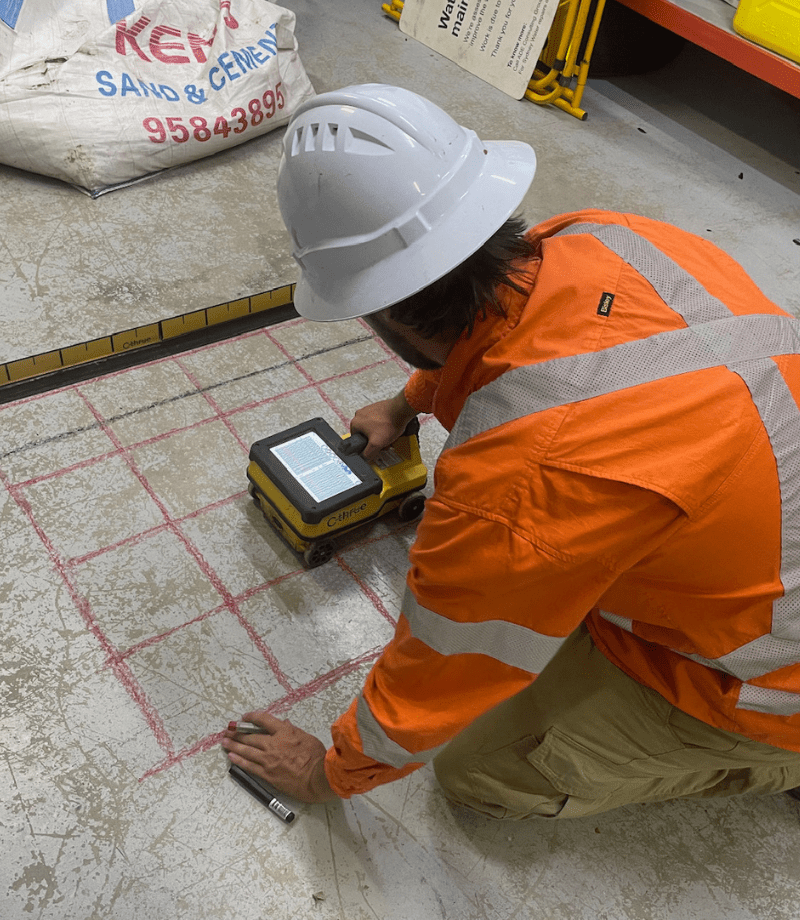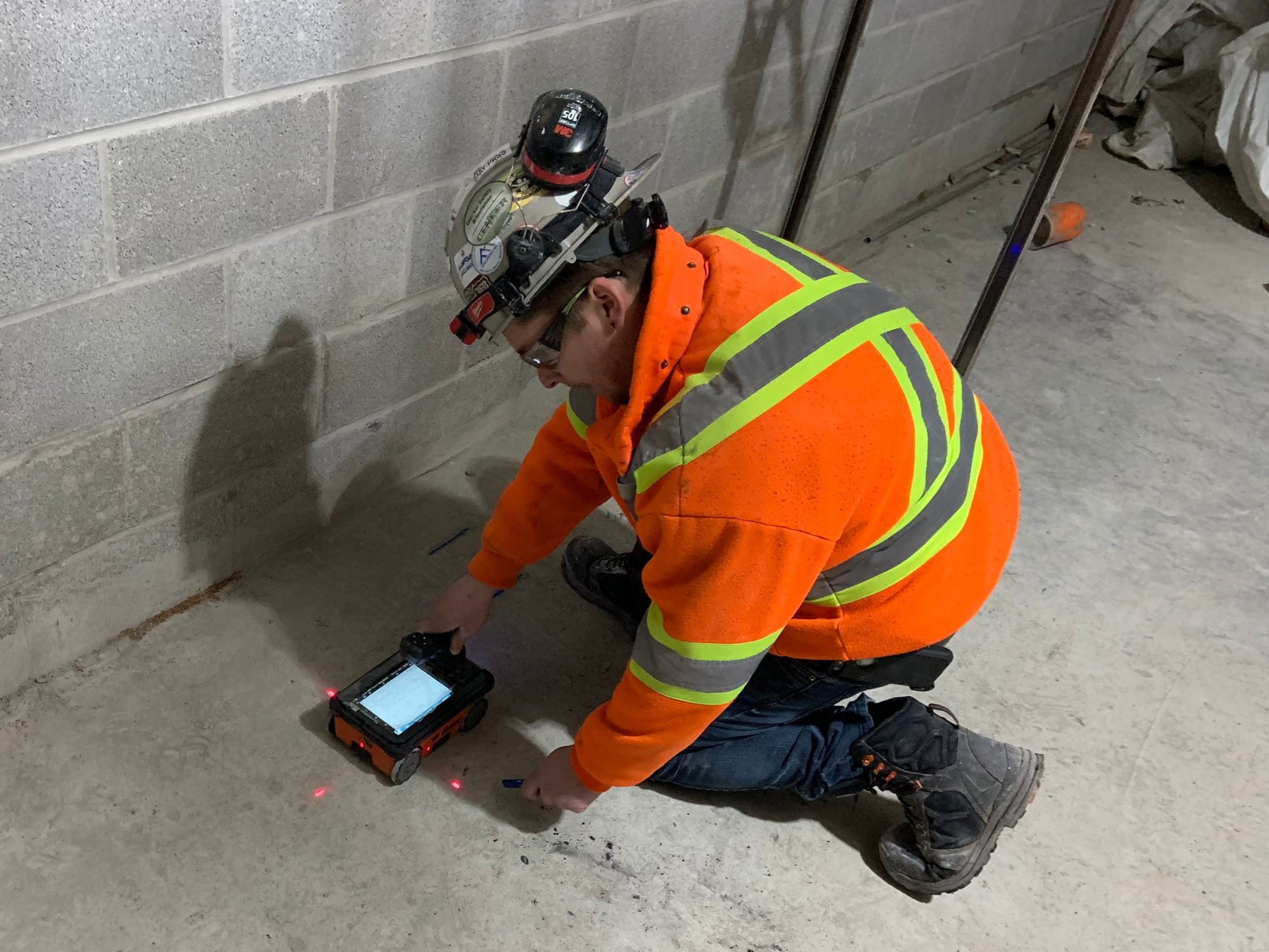RainierGPR Concrete Scanning: Secret Insights for Effective Jobs
RainierGPR Concrete Scanning: Secret Insights for Effective Jobs
Blog Article
Exploring the Midst: A Comprehensive Overview to Concrete Scanning and Its Diverse Applications
In the realm of construction and infrastructure development, the thorough procedure of concrete scanning holds a critical function in making certain the structural honesty and security of projects. As technology proceeds to develop, the applications of concrete scanning have actually broadened much past simple surface-level assessments.
Value of Concrete Scanning
Understanding the significance of concrete scanning is important in making sure the safety and security and integrity of structures during building and construction and improvement projects. Concrete scanning uses advanced modern technologies such as ground-penetrating radar (GPR) and electro-magnetic induction to identify embedded things, gaps, or other abnormalities within concrete structures - RainierGPR Concrete Scanning. By conducting complete scans prior to drilling, reducing, or coring right into concrete, building groups can prevent unexpected damage to vital architectural aspects like rebar, conduits, or post-tension wires. This proactive strategy not only stops pricey repairs and task delays yet likewise improves overall construction security by alleviating the threat of structural failings or collapses as a result of compromised stability.
In addition, concrete scanning plays a pivotal duty in guaranteeing compliance with building ordinance and policies that mandate the protection of existing structural parts throughout building and construction tasks. By properly mapping out the internal make-up of concrete, scanning technologies make it possible for building and construction professionals to make informed decisions that maintain the structural stability and durability of structures and facilities projects. In significance, the value of concrete scanning exists in its capacity to safeguard both the architectural stability and the employees included in construction endeavors.
Technologies Utilized in Concrete Scanning
Concrete scanning depends on advanced technologies such as ground-penetrating radar (GPR) and electromagnetic induction to precisely detect ingrained objects and abnormalities within concrete frameworks. Ground-penetrating radar operates by giving off high-frequency electromagnetic waves right into the concrete.
Electro-magnetic induction, on the various other hand, works by creating electro-magnetic fields around a concrete framework via a transmitter coil. When steel things are present within the concrete, they interfere with these electromagnetic fields, creating eddy currents to move via the metal. By determining the modifications in the electromagnetic fields with a receiver coil, the system can determine the place of metallic objects in the concrete.
These advanced modern technologies play an important role in non-destructive screening, making certain the safety and security and stability of concrete structures in different sectors.
Applications in Building Industry
Within the construction sector, concrete scanning modern technology finds diverse applications that improve task efficiency and safety. One essential application is the discovery of rebar, post-tension cords, and other embedded items before drilling or reducing right into concrete structures. By precisely mapping out these aspects, building groups can prevent pricey problems, ensure structural integrity, and prevent prospective safety hazards. Additionally, concrete scanning is made use of for locating spaces, such as air pockets or areas of degeneration within concrete, which can jeopardize the general strength of a framework. By determining these spaces beforehand, building specialists can take essential steps to address them and keep the toughness of the building. Moreover, concrete scanning plays an essential duty in quality assurance by confirming the density of concrete covers over reinforcement, ensuring conformity with style requirements and requirements. In general, the applications straight from the source of concrete scanning in the building market contribute dramatically to improving project workflows, lowering threats, and providing top quality outcomes.

Security Benefits of Concrete Scanning
In the world of construction safety, the execution of concrete scanning technology offers a vital benefit in preemptively determining potential threats and strengthening structural integrity. By making use of innovative scanning approaches such as ground-penetrating radar (GPR) and electro-magnetic induction, construction groups can properly find rebar, post-tension wires, channels, and other concealed objects within concrete structures. This aggressive technique considerably minimizes the threat of unintentional strikes throughout boring, cutting, or coring tasks, thereby avoiding expensive damages, injuries, and task delays.
Additionally, concrete scanning enhances worker security by supplying real-time information regarding the architectural condition of concrete components. By resolving potential safety problems immediately, concrete scanning contributes to producing a safe working atmosphere and alleviating the possibility of architectural failures or crashes on building sites.
Future Patterns in Concrete Scanning
Emerging innovations in scanning innovation are poised to reinvent the area of concrete examination and evaluation. One major trend that is obtaining traction is the combination of expert system (AI) and Get the facts maker learning formulas right into concrete scanning gadgets. By taking advantage of the power of AI, these systems can assess vast amounts of data collected during scanning processes to offer more accurate and detailed insights right into the problem of concrete frameworks. This can assist in discovering surprise problems, anticipating prospective architectural failures, and even advising upkeep strategies.
Another significant trend is the development of more portable and easy to use scanning devices. Miniaturization of scanning tools enables much easier accessibility to confined rooms and remote areas, making examinations much more effective and detailed. In addition, innovations in cordless interaction innovations enable real-time data transfer and analysis, facilitating quicker decision-making procedures.
Furthermore, there is a growing emphasis on sustainability in concrete scanning modern technologies - RainierGPR Concrete Scanning. Makers are significantly incorporating environment-friendly materials and energy-efficient functions into their tools to reduce ecological effect. These future patterns are readied to improve the performance, precision, and sustainability of concrete scanning methods, forming the sector's future landscape
Verdict
In conclusion, concrete scanning plays a vital function in the construction sector by making certain the safety and security and performance of numerous tasks. By making use of innovative technologies, such as GPR and radar imaging, specialists are able to properly find potential hazards within concrete frameworks. The applications of concrete scanning are large and remain to advance, making it an important tool for keeping the honesty of structures and infrastructure. As innovation developments, the future of concrete scanning holds encouraging developments for enhancing building procedures.

Report this page